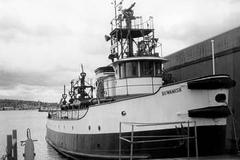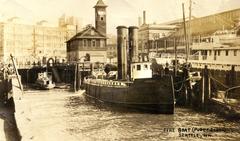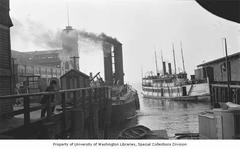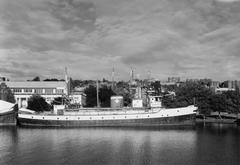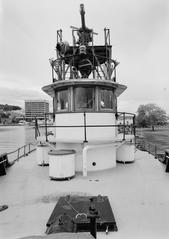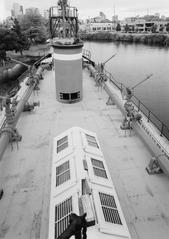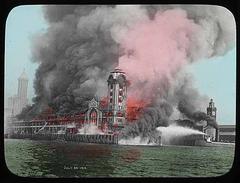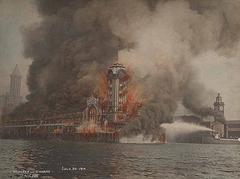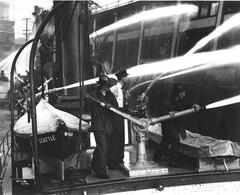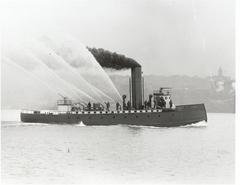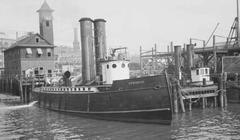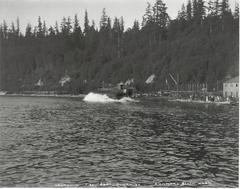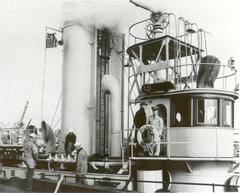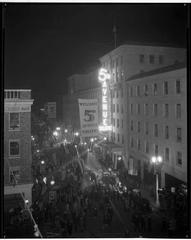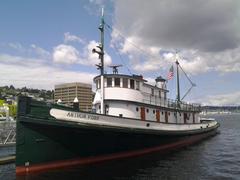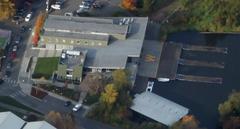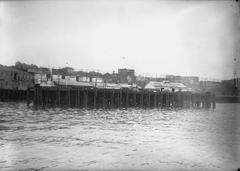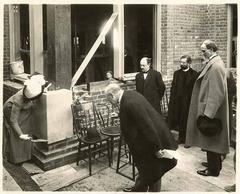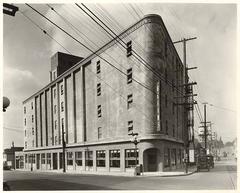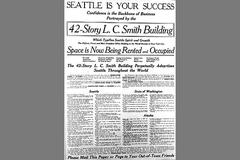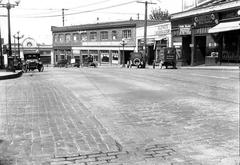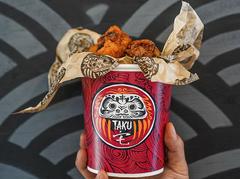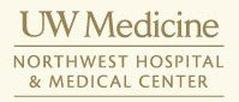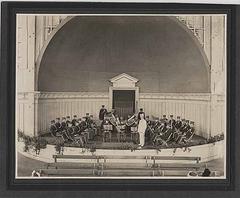
Duwamish Seattle Visiting Hours, Tickets, and Historical Sites Guide
Date: 14/06/2025
Introduction
Seattle’s Duwamish area offers visitors an immersive journey into the heart of Indigenous heritage through the Duwamish Longhouse & Cultural Center and its surrounding cultural and natural landmarks. As the ancestral homeland of the Duwamish people—known as the dxʷdəwʔabš or “People of the Inside”—this region reflects thousands of years of living culture, history, and resilience. The Duwamish Longhouse, located at 4705 West Marginal Way SW, serves as a museum, art gallery, and vibrant community hub, allowing visitors to engage directly with the tribe’s traditions, language, and ongoing revitalization efforts (Duwamish Longhouse & Cultural Center).
Admission to the Longhouse is free, with visiting hours from Tuesday through Saturday, 10 AM to 5 PM. Guided tours are available by appointment and offer deeper insights into the tribe’s history, connection to the Duwamish River, and contemporary identity amid ongoing advocacy for federal recognition (Seattle Times article on federal recognition).
Beyond the Longhouse, the Duwamish neighborhood and nearby sites such as South Park Plaza, the Alki Trail, and the West Seattle waterfront present a vibrant blend of Indigenous stewardship, eco-tourism, and public art. Visitors are encouraged to observe cultural etiquette, acknowledge ancestral lands, support Indigenous-led initiatives, and engage thoughtfully with community events (Duwamish Tribe cultural etiquette).
This guide provides essential information on visiting hours, ticketing, accessibility, cultural significance, and practical tips for a meaningful and respectful experience. Whether you seek to deepen your understanding of Seattle’s original peoples or explore the area’s natural beauty and community spirit, this guide will help you plan your visit and enrich your connection to this living heritage.
Table of Contents
- Discover the Duwamish Longhouse: Seattle’s Living Indigenous Heritage
- Duwamish Cultural Significance
- Ancestral Homeland and Living Heritage
- The Duwamish Longhouse & Cultural Center
- Visitor Information: Hours, Tickets, and Accessibility
- Land Acknowledgement and Indigenous Stewardship
- Federal Recognition and Contemporary Identity
- Cultural Events and Community Engagement
- Artistic and Spiritual Traditions
- Practical Visitor Tips for Respectful Engagement
- Duwamish in the Broader Native Seattle Context
- Visiting the Duwamish Area: Historical Sites and Attractions
- Duwamish Longhouse & Cultural Center: Experience Overview
- South Park Plaza & Duwamish Riverfront
- Alki Trail and West Seattle Waterfront
- Community-Led Tours and Cultural Engagement
- Indigenous Plantings and Healing Gardens
- Art, Murals, and Public Installations
- Eco-Tourism and Sustainable Experiences
- Practical Visitor Information
- Noteworthy Nearby Attractions
- Frequently Asked Questions (FAQ)
- Cultural Etiquette and Responsible Tourism
Discover the Duwamish Longhouse: Seattle’s Living Indigenous Heritage
The Duwamish Longhouse & Cultural Center stands as a beacon of Seattle’s Indigenous heritage. Visitors can engage with dynamic exhibits, participate in workshops, and attend storytelling sessions that bring the Duwamish legacy to life.
Location and Visiting Hours
- Address: 4705 West Marginal Way SW, Seattle, WA 98106
- Hours: Tuesday–Saturday, 10 AM–5 PM
- Admission: Free (donations appreciated)
- Accessibility: Wheelchair accessible; those with special needs are encouraged to contact staff in advance for assistance
Tickets and Guided Tours
No general admission ticket is required. Guided tours, which provide in-depth insights into Duwamish history, culture, and the Longhouse’s significance, are available by appointment. Check the official website or contact the center directly for tour availability and event schedules.
Exploring the Longhouse and Cultural Center
The Longhouse serves as the tribal headquarters, museum, art gallery, and a gathering space for the community. Visitors can explore:
- Rotating Native artist exhibits
- Interpretive displays on Duwamish history, spirituality, and daily life
- Public events such as cultural performances, workshops, and seasonal celebrations
Nearby Attractions and Travel Tips
Explore adjacent sites like Terminal 107 Park and Herring’s House Park for additional perspectives on Indigenous history and Seattle’s natural beauty. The area is accessible by public transit, and comfortable walking shoes are recommended for exploring the grounds and nearby parks.
Duwamish Cultural Significance
Ancestral Homeland and Living Heritage
The Duwamish people, the dxʷdəwʔabš or “People of the Inside,” are Seattle’s original inhabitants. Their villages and seasonal camps along the Black, Cedar, and Duwamish rivers formed a complex network of trade, kinship, and stewardship (Seattle Times). Chief Si’ahl (Seattle), the city’s namesake, led both the Duwamish and Suquamish tribes, highlighting their foundational role in the city’s identity (Visit Seattle).
The Duwamish Longhouse & Cultural Center
Built in the traditional cedar post-and-beam style near the historic village site of hah-AH-poos, the Duwamish Longhouse & Cultural Center offers:
- Rotating Native artist and Coast Salish art exhibits
- Interpretive displays on artifacts, history, and spirituality
- Storytelling and craft workshops open to the public
- Guided group tours on anthropology, geology, and living traditions
Visitor Information: Hours, Tickets, and Accessibility
- Hours: Tuesday–Saturday, 10:00 AM–5:00 PM
- Admission: Free; donations are welcomed
- Guided Tours: By appointment for groups, schools, and organizations
- Accessibility: Fully ADA compliant
- Parking: Limited on-site; public transit and ride-share recommended
Land Acknowledgement and Indigenous Stewardship
Seattle sits on unceded Duwamish land. Visitors are encouraged to honor this through land acknowledgments and by learning about ongoing stewardship and restoration projects, including native plantings and wetland habitat restoration (Duwamish Longhouse).
Federal Recognition and Contemporary Identity
Despite Chief Seattle’s 1855 Treaty of Point Elliott, the Duwamish were denied a reservation and federal recognition. Many descendants are part of other Puget Sound treaty tribes. Recent legal developments may change this, with new criteria recognizing matrilineal descent and community continuity (Seattle Times).
Cultural Events and Community Engagement
The Duwamish Tribe hosts:
- The annual Duwamish River Festival, celebrating environmental restoration with art, music, and education (Seattle’s Child)
- Regular workshops and storytelling sessions at the Longhouse
- Collaborative restoration and environmental education projects
Artistic and Spiritual Traditions
Traditional crafts such as basket weaving, carving, and beadwork are taught at the Longhouse. The Lushootseed language is preserved through educational programs. Ceremonies emphasize interconnectedness with land and water and feature drumming, singing, and storytelling (Visit Seattle).
Practical Visitor Tips for Respectful Engagement
- Visit during open hours (Tuesday–Saturday, 10 AM–5 PM)
- Attend events and workshops for immersive cultural experiences
- Begin your visit with a land acknowledgment (Duwamish Land Acknowledgement)
- Support Indigenous artists by purchasing from the Longhouse gift shop
- Respect rules for photography and participation, especially during ceremonies
- Use public transit or nearby parking to minimize impact
Duwamish in the Broader Native Seattle Context
Other Native-led cultural centers include the Daybreak Star Indian Cultural Center and the Burke Museum. The Duwamish Longhouse, however, uniquely offers a living, immersive experience of Seattle’s first people.
Visiting the Duwamish Area: Historical Sites and Attractions
Duwamish Longhouse & Cultural Center: Experience Overview
At the Duwamish Longhouse & Cultural Center, guests can enjoy museum exhibits, art galleries, and cultural programming. Tribal members often greet visitors with ancestral names, fostering a welcoming environment. Annual events include the Native Art Market and seasonal celebrations. For updated schedules and group tours, visit the official website.
South Park Plaza & Duwamish Riverfront
South Park Plaza (8456 Dallas Ave S) is a vibrant public space developed with the Duwamish River Community Coalition. Features include Lushootseed language etchings, Indigenous plantings, a story rock, and a striking “South Park” sign. The adjacent Duwamish River is a focus of ongoing environmental restoration, with guided nature walks available.
Alki Trail and West Seattle Waterfront
The Alki Trail is a scenic five-mile bike and walking path offering views of Seattle’s skyline, Puget Sound, and the Olympics. It connects parks and beaches, including Alki Beach, where visitors can kayak, paddleboard, or explore tide pools.
Community-Led Tours and Cultural Engagement
Community organizations like the Duwamish River Community Coalition offer guided tours on environmental justice, urban ecology, and cultural heritage. These tours, often free or donation-based, include visits to restoration sites, public art, and community gardens.
Indigenous Plantings and Healing Gardens
Duwamish public spaces feature native plantings and healing gardens, such as those at South Park Plaza and the historic Dearborn House. Interpretive signage and guided tours teach visitors about cultural and environmental significance.
Art, Murals, and Public Installations
Public art and murals throughout the area highlight Indigenous motifs and community stories. The “South Park” sign at South Park Plaza is a prominent symbol of neighborhood pride.
Eco-Tourism and Sustainable Experiences
Duwamish is a leader in eco-tourism, offering nature walks, birdwatching, and conservation opportunities. Local businesses promote sustainable dining and green transportation. Visitors are urged to minimize waste and participate in community environmental projects.
Practical Visitor Information
- Transportation: Accessible by public transit, bike, and car; many sites are walkable.
- Parking: Limited; plan to use public transit or ride-share.
- Best Time to Visit: Spring through early fall for optimal weather.
- Weather: Bring layered clothing and rain gear.
- Dining: Explore local eateries featuring diverse and Indigenous-inspired cuisine.
- Cultural Respect: Always follow site-specific protocols and support Indigenous initiatives.
Noteworthy Nearby Attractions
Nearby destinations include Hamilton Viewpoint Park, Alki Beach, and the Center for Wooden Boats, offering additional layers of Seattle’s southwest cultural and natural landscape.
Cultural Etiquette and Responsible Tourism
Visiting Hours, Tickets, and Location
- Duwamish Longhouse & Cultural Center: Tuesday–Saturday, 10 AM–5 PM; admission is free (Duwamish Tribe).
- Location: 4705 W Marginal Way SW, Seattle, WA 98106
Respecting Duwamish Culture and Community
Acknowledging Ancestral Lands
Begin your visit with a land acknowledgment, honoring the dxʷdəwʔabš (Duwamish people), who have stewarded these lands for millennia (Duwamish Land Acknowledgement).
Engaging with Traditions
- Observe guidelines: Respect rules about photography and participation.
- Attend respectfully: Participate in storytelling and dance only when invited.
- Support the community: Buy authentic crafts from the gift shop (Duwamish Tribe).
Responsible Tourism Practices
- Choose Indigenous-led guides: Prioritize Duwamish- or Native-led tours (NativeTribe.info).
- Environmental stewardship: Stay on trails, avoid disturbing wildlife, and learn about local ecology (Evergreen College PDF).
- Educate yourself: Learn about the tribe’s history and ongoing advocacy (Stand With the Duwamish).
Interacting with Community Members
- Use respectful language; always ask before photographing people, especially elders and children.
- Listen and approach conversations with humility.
Frequently Asked Questions (FAQ)
Q: What are the Duwamish Longhouse visiting hours?
A: Tuesday through Saturday, 10 AM–5 PM.
Q: Is there an admission fee or are tickets required?
A: Admission is free; donations are encouraged.
Q: Are guided tours available?
A: Yes, by appointment for groups; contact the Longhouse for details.
Q: How can I support the Duwamish Tribe?
A: Donate, purchase crafts, attend events, or volunteer.
Q: Is the Longhouse accessible?
A: Yes, it is fully wheelchair accessible.
Summary and Visitor Tips for Duwamish Seattle
Visiting the Duwamish Longhouse & Cultural Center and the wider Duwamish area offers a unique opportunity to engage with a resilient Indigenous culture. The Longhouse stands as a testament to the Duwamish people’s ongoing revitalization, providing free access to educational exhibits, art, and community events (Duwamish Longhouse & Cultural Center).
Plan your trip during open hours (Tuesday–Saturday, 10 AM–5 PM) and consider booking a guided tour. Nearby attractions such as South Park Plaza and the Alki Trail enrich the experience. Respect cultural protocols, support Indigenous artists, and honor land acknowledgments. Eco-tourism, healing gardens, and public art highlight environmental stewardship and cultural sustainability.
To enhance your visit, download the Audiala app for audio guides and curated tours of Seattle’s Indigenous historical sites. Stay informed by following the Duwamish Tribal Council and visiting their official website.
References and Further Reading
- Duwamish Longhouse & Cultural Center
- Seattle Times Article on Federal Recognition
- Visit Seattle Native Heritage
- South Park Plaza Opening Announcement
- Duwamish Tribe official website
- Native American Heritage and Cultural Tourism in Seattle
- Stand With the Duwamish
- Daybreak Star Indian Cultural Center
- Burke Museum
- Seattle’s Child Festival Guide
- Washington State Tribal Museums
- Evergreen College Duwamish River
- MOHAI

